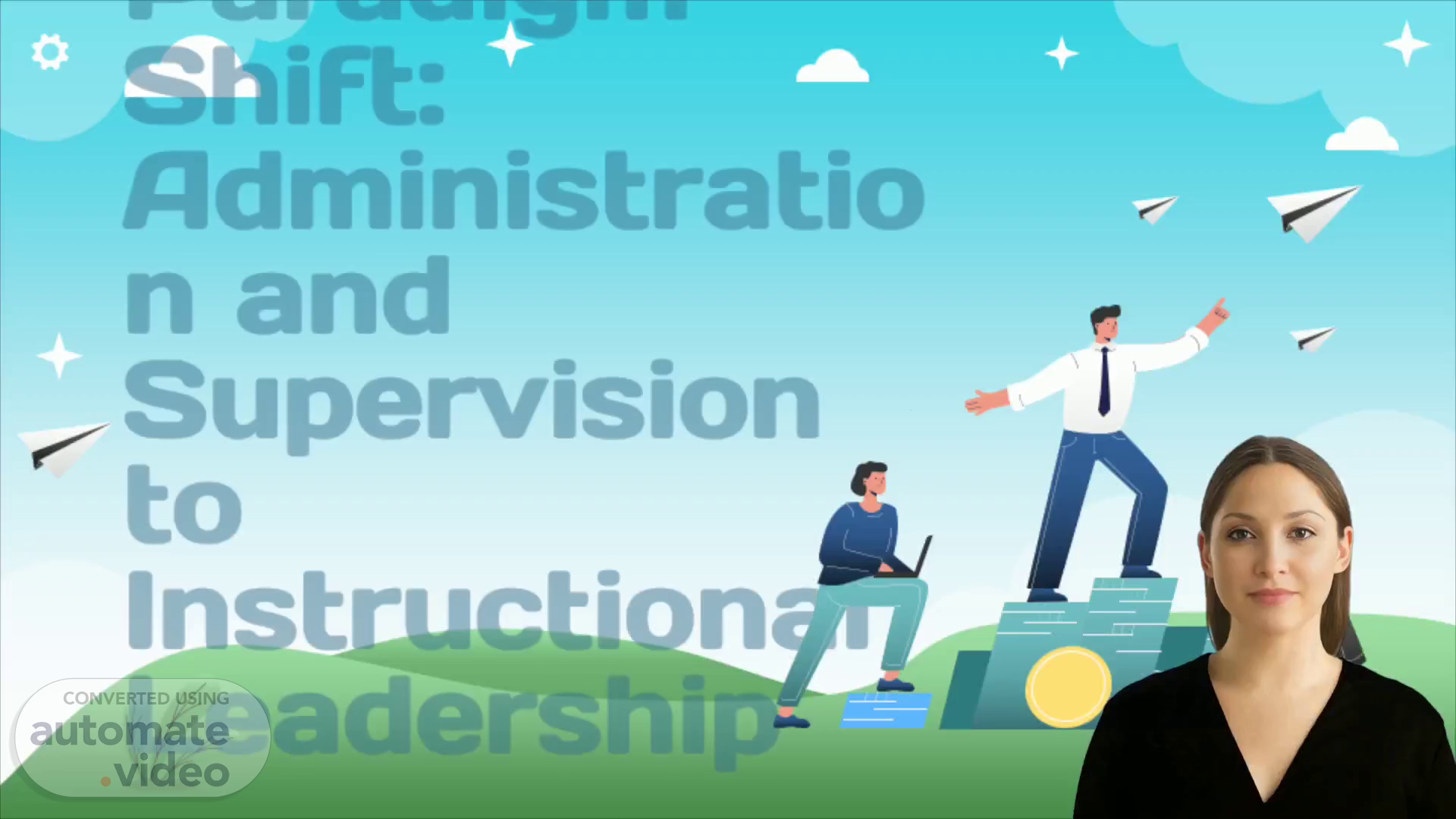
Paradigm Shift: Administration and Supervision to Instructional Leadership
Scene 1 (0s)
[Virtual Presenter] As an educational administrator, it is essential to understand the paradigm shift needed to provide students with the best learning experiences. This shift requires changing our focus from primarily administrative and supervision roles to becoming instructional leaders. In order to accomplish this transition, it is important to develop a strong understanding of instructional strategies, assessment practices, classroom management techniques, and educational research. With these skills, educational administrators can become an integral part of the student learning environment, ensuring that students receive the highest quality education..
Scene 2 (44s)
[Audio] There was formerly a perception of educational administration and supervision as a negative force, however this view has altered. Goddard and Richards (1998) elaborate that a revival of supervision is occurring, with a concentration on instructional leadership. The alteration in emphasis is essential to meet the demands of contemporary classrooms, as instructional leadership is a significant factor in aiding teachers in establishing successful methods for improving their students' learning..
Scene 3 (1m 17s)
[Audio] Weber's research emphasizes that instructional leadership is not just limited to managing and monitoring of a class. It involves setting goals for the school, establishing standards, and providing an atmosphere that promotes learning. It is a type of moral and transformational power over an organization that sets up a variety of duties and obligations. Now let's take a more in-depth look at such responsibilities..
Scene 4 (1m 45s)
[Audio] Instructional leadership is an interpersonal and dynamic process, involving setting school academic goals, monitoring achievement levels and evaluating programs, as well as setting standards for achievement and setting the tone for a learning climate. It also includes hiring, supervising and evaluating teachers, protecting instructional time and programs, and creating collaborative goals. Now let's look into the major functions of instructional leadership in greater detail..
Scene 5 (2m 17s)
[Audio] Educational administrators need to shift from traditional administration and supervision roles to instructional leadership in the modern classroom in order to meet the requirements of today's schools. Instructional leadership includes maximizing the efficiency of instructional organization, setting school academic goals, examining achievement levels and analyzing programs, formulating standards for achievement and creating a positive learning environment, recruiting and assessing teachers, and preserving instructional time and programs. Furthermore, instructional leadership should encompass the formation of joint objectives with teachers and personnel. Weber's article gives further insight into the role of instructional leadership for educational administrators..
Scene 6 (3m 5s)
[Audio] Administrators must be familiar with all of the instructional programs in their school. They must understand the objectives of each program, recognize any issues or weak areas, and come up with a solution to these problems. Furthermore, it is essential for the administrator to work together with teachers, parents, and other stakeholders in the school community for successful instructional leadership. The two main components of this role are curriculum management and staff professional development. Creating an atmosphere of mutual trust and cooperation between all parties is necessary for optimal instruction in the modern classroom..
Scene 7 (3m 47s)
[Audio] The instructional leader's responsibility is to guarantee that teachers have the necessary expertise, competencies, and resources for creating a functional learning atmosphere. Such an atmosphere is obtained through establishing a climate of trust and mutual respect, as well as by promoting conversations and team effort with teachers. This leads to knowledge exchange and implementation of tactics which are more appropriate for the students' needs. Additionally, the instructional leader should be well-informed regarding current educational movements and be able to guide teachers in their decision-making. With a focus on aiding all students reach success, the instructional leader can play an essential role in a productive and prosperous classroom..
Scene 13 (5m 4s)
[Audio] The numbers presented in this article suggest that educational administrators should move away from their standard roles of administration and supervision, and instead become more focused on instructional leadership. This transition is not only in line with the needs of modern classrooms, but the results demonstrated by the numbers indicate that such an approach could drastically increase student success..